There’s no denying it; Ferrari makes pretty cars. It has been doing so ever since the debut of the 125 S way back in 1947, and The Roma spider is no different. Unlike many Ferraris, this car doesn’t hit you in the face with hard lines and acute aerodynamic angles making it look like a caged animal waiting to be unleashed on the road. This car is roaming the open roads alongside Bentley, Porsche, Aston Martin and Mercedes. On the aesthetics side, it’s up there with the best. It’s the epitome of understated elegance.
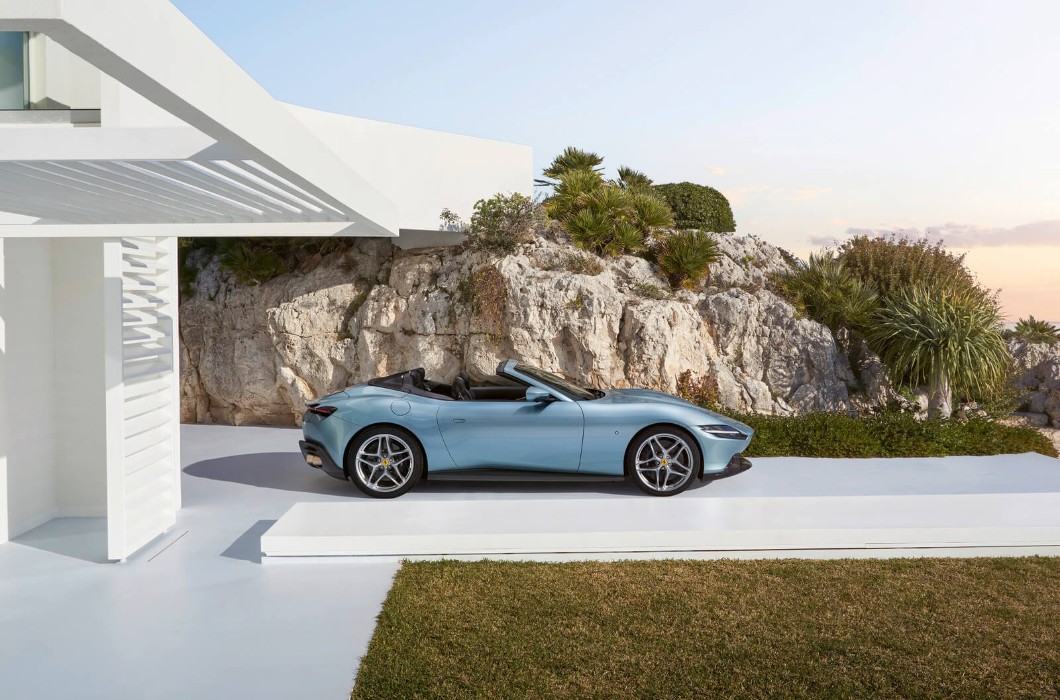
This theme continues inside the car. Simple (yet very hi-tech) seating, a canvas roof and no big red start button. To be honest, some features (like the start button) were so understated it took me a good couple of minutes to find it. An extremely discreet touch area on the base of the steering wheel is how you start this car, in case anyone was wondering.
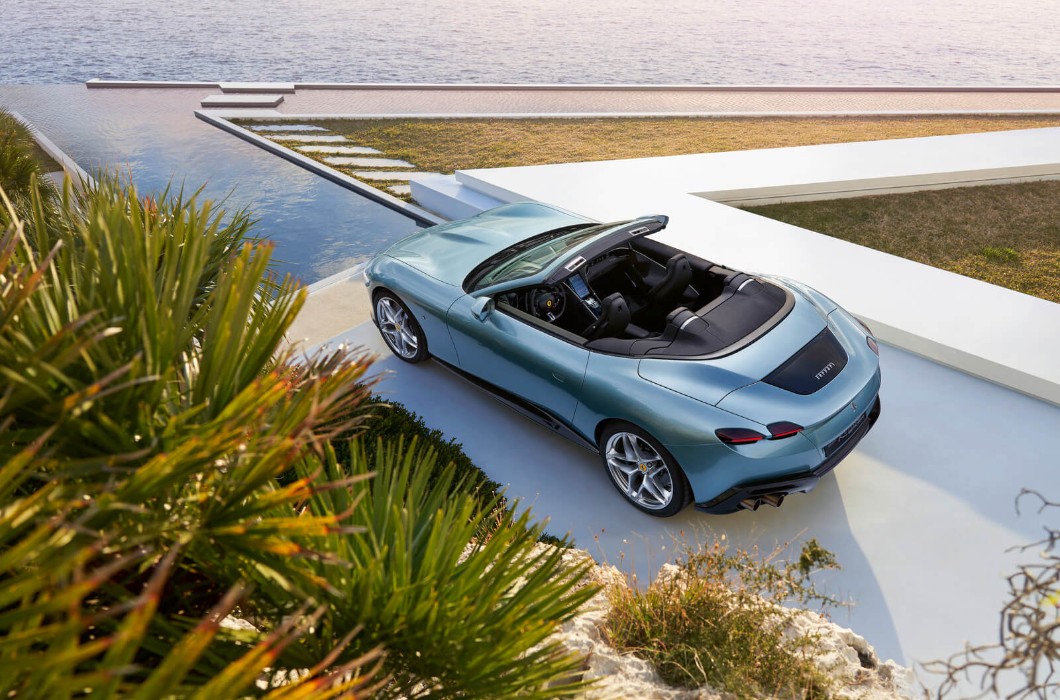
Having fired up the stunning 3.9-litre twin turbo V8, which produces 612bhp, and tested the controls for putting the car into reverse and opening the roof, I play with the gearing mode. It’s either manual or auto, a facet that pays homage to old gear shifters of the past. The driving position is great and the steering wheel is comfortable to hold, while the seats can be adjusted to exactly the position that gives you maximum comfort. It’s time to see what this GT is like on the road.
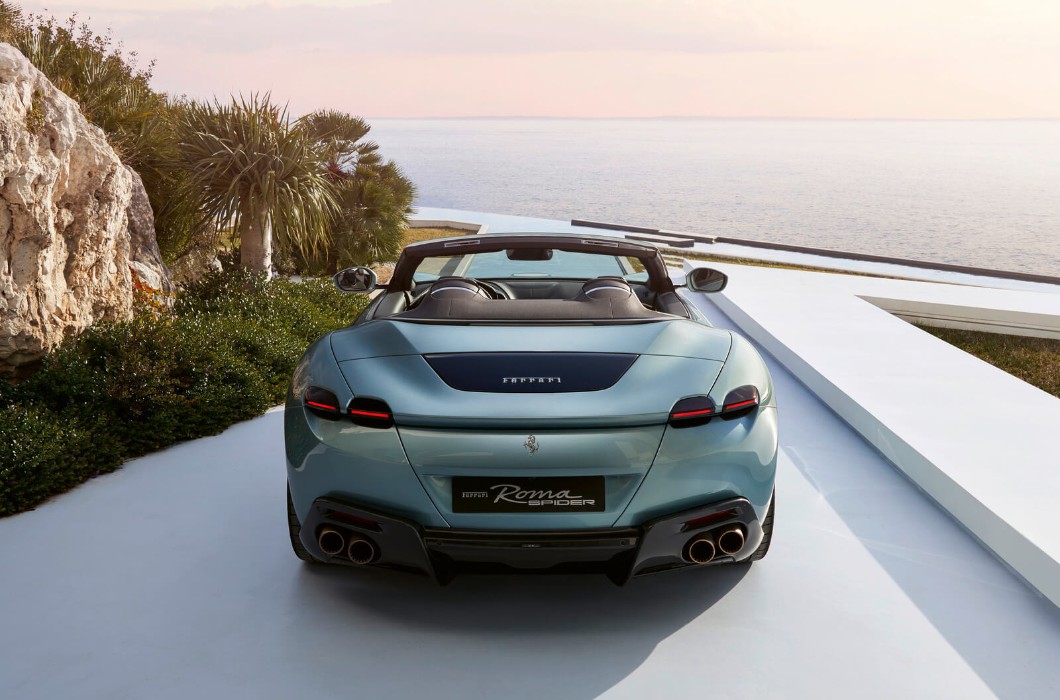
In a nutshell, it’s a very, very nice place to be. This is the first Ferrari I’ve felt like I could drive all day, every day. It’s not a big grand tourer like the 12 Cylindri. It’s more like your daily driver. You don’t start sweating every time you see a bump in the road or a speed hump that’s been modelled on Mount Everest. Thanks to its magnetic dampeners, the Roma Spider easily handles any bumps in the road. Granted, there aren’t too many bumps on Dubai roads, so the few I encountered didn’t worry me. However, wisdom and experience has taught me to be cautious, so I’ll admit that I did start my ascent up a few large speed bumps slower than a 90-year-old climbing that aforementioned Nepalese mountain range.
However, after a few runs, I realised the Roma Spider clears them relatively easily at normal speeds, thus adding further enjoyment to the drive and helping to cement it as a potential daily driver in my mind.
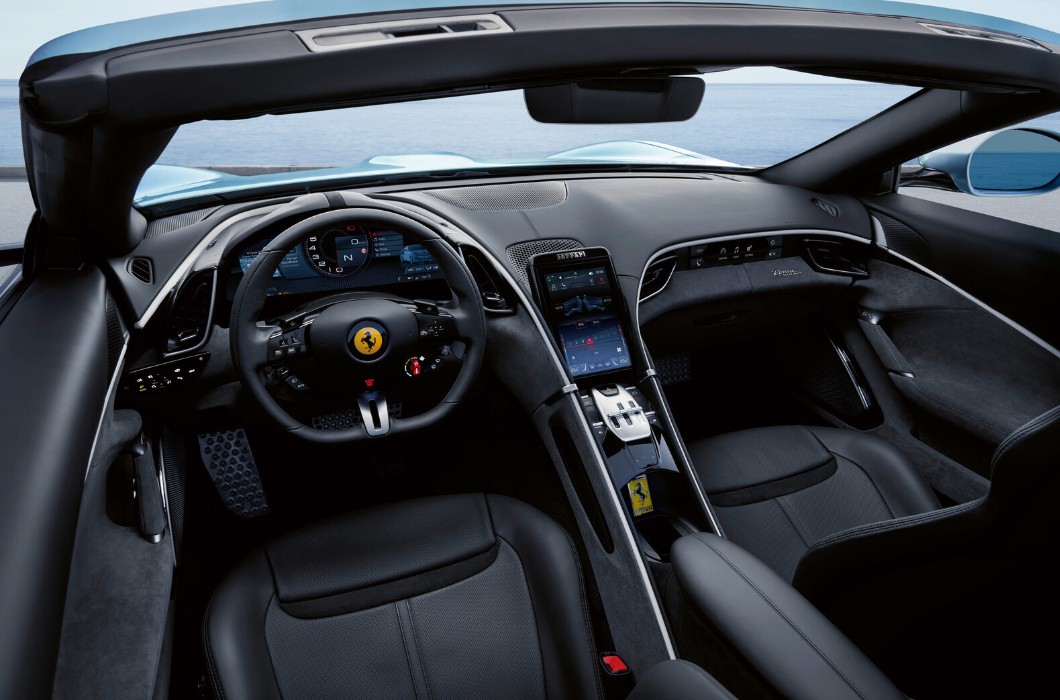
Away from the mini mountain ranges, once you get to open up that glorious V8 engine—yes, it can scream like all Ferraris can—you can go from 0-100km/h in 3.4 seconds, but I often found myself just enjoying the drive. The eight-speed automatic gear box keeps the revs remarkably low as you cruise down the highway at 100-120km/h, Dubai’s speed limit. A faint burble lets others know that this Ferrari may look daintier than its brothers and sisters but still has plenty of grunt.
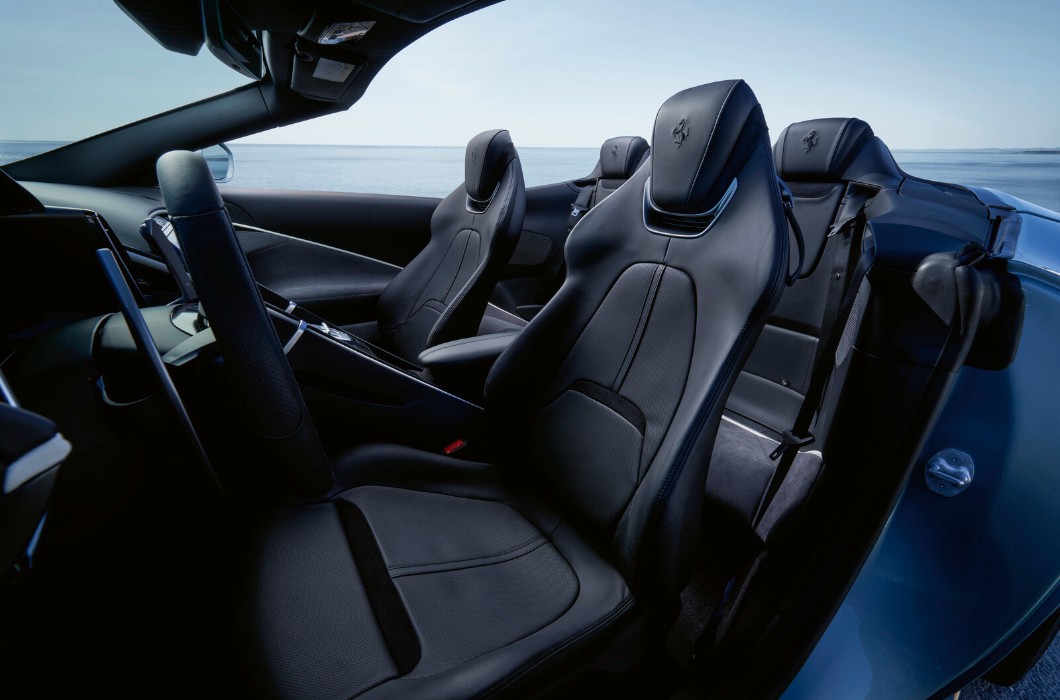
With the roof up, you’d barely realise it’s made from canvas, since the Ferrari engineers have done a fantastic job with the acoustics in the cabin. Even with the roof down (which can be lowered in 13.5 seconds), I didn’t have to yell at my passenger or turn music up to a level where it can be heard three cars away. The steering was precise and after just a few kilometres, I was confident of the car’s performance around bends and any other task I requested from it. If I was asked to drive this car back to Italy for a service, I truly wouldn’t mind. It’s such a pleasant place to be and a joy to drive.
However, as much as I loved that engine, the noise and performance it produces and the incredible open road experience, there are parts of the Roma Spider I’d happily ask the factory to uninstall or swap out if I could.
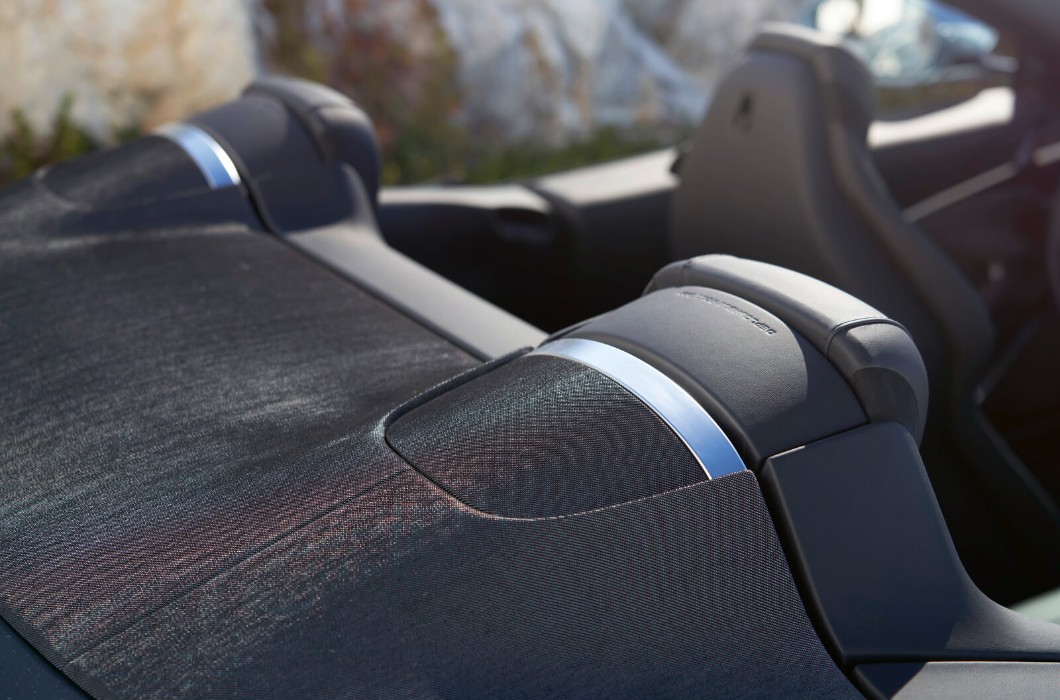
From my understanding, Ferrari must have vast amounts of data proving that haptic touch pads and screen-based controls are better/safer for you than manual controls. I believe this to be the case because even as a tech lover, I found navigating the infotainment system tedious and annoying. So much so that I didn’t want to interact with it unless I really had to.
In stark contrast to the looks of the car and the refined driving experience, the digital dash is over-complicated and over-crowded. The level of refinement is excellent, but it would be much more user-friendly if, for example, lumbar controls were situated alongside the buttons you use to move the seat. Why do they have to be buried in menus accessed via a small haptic touch pad on the steering wheel? I understand some safety features like road sign recognition have to be included and turned on by default due to new laws, but why do they have to be buried in menus accessed via the steering wheel on your dash? A physical button anywhere would be welcomed. One push and it’s off.
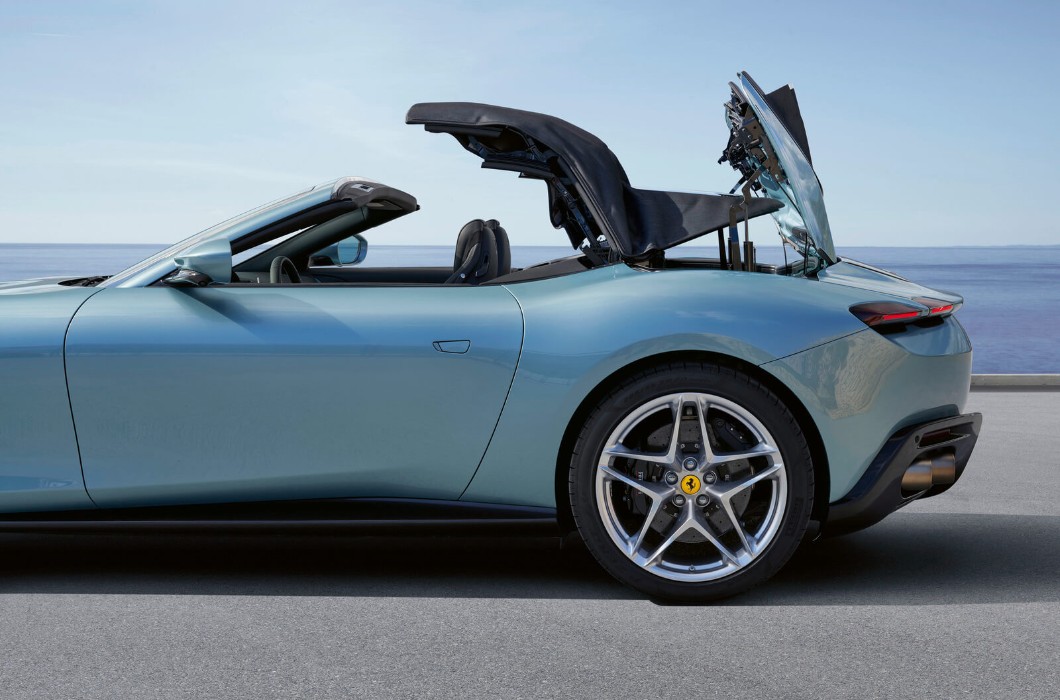
There’s so many options within these digital menus that turn back on by default every time you start up the car, it’s almost like you need to have a 10 minute pre-flight check to ensure the car is set up how you want it every time you leave home. The alternative is that you learn to live with the default factory settings, but that is not for me. Why this had to be squeezed into the dash display I’ll never know. Give it a few more years and I’ll need glasses to read the tiny font on the dash display. I would have even preferred it to be easily accessible from the centre console touch pad. If it is, I didn’t find it. That seemed to be reserved for music inputs, air-conditioning controls and the sat nav (if you’re not using CarPlay or Android Auto). Maybe a processor upgrade would help so the digital controls didn’t feel so clunky, or as I am forever saying, simply bring back some buttons!
The Roma Spider is the first front-engined Ferrari Spider since the Ferrari 365 GTS 4 (better known as the Daytona). It’s beautiful inside and out. It’s a remarkably great car to drive that could easily be used as a daily driver. Once you’ve learned to live with the over-complicated digital aspects of the infotainment system, there’s not much that could wipe the smile from your face. Even sitting in traffic was a more enjoyable experience than normal. I thoroughly enjoyed my time in the Roma Spider, although I do wish they’d kept a few elements of the Daytona from way back in 1969—like some physical buttons.







